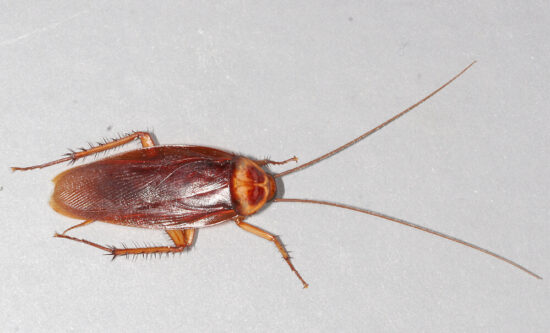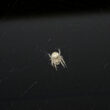Ever turned on the kitchen light late at night and watched a cockroach scurry across the counter? You’re probably wondering how it got there in the first place. The truth is, roaches don’t just appear out of thin air. They find specific ways into your home, and understanding where cockroaches come from is the first step to keeping them out.
Even the cleanest homes can end up with a roach problem. These sneaky pests are experts at finding tiny openings and hidden pathways into your living space. They’re searching for three basic things: food, water, and shelter. If your home provides any of these, roaches will do whatever it takes to get inside.
The good news? Once you know where roaches come from, you can take steps to block their entry points and make your home less appealing to these unwanted guests. Let’s look at the most common ways these pests find their way inside.
1. Cracks and Gaps in Walls, Foundations, and Floors
One of the most common places where roaches come from is through tiny cracks and gaps in your home’s structure. These pests have incredibly flat bodies that let them squeeze through openings as narrow as 1/16 of an inch. That’s about the thickness of a dime!
Cockroaches can enter through foundation cracks, gaps around baseboards, and small openings in exterior walls. The really frustrating part is that once they get into these cracks, they can travel between rooms through the spaces inside your walls. This means a roach that enters through your basement could end up in your bedroom without ever being seen.
Check the outside of your home carefully for any cracks or gaps. Pay special attention to corners where walls meet, areas around the foundation, and spots where different building materials come together. Even hairline cracks can be entry points.
To keep roaches out, seal these openings with caulk or silicone-based sealants. This simple step can make a huge difference in preventing infestations. Make it a habit to inspect your home’s exterior a few times a year and seal any new cracks that appear.
2. Doors and Windows
Doors and windows are surprisingly common entry points for cockroaches. These pests can easily slip underneath doors, especially when there’s a gap between the door and the floor. If you can see daylight under your door, a cockroach can definitely fit through that space.
Roaches are especially likely to sneak in through doors that get left open for extended periods. Maybe you’re bringing in groceries, letting the dog out, or just enjoying some fresh air. Those few minutes are all a cockroach needs to dart inside.
Old or worn weather stripping around doors and windows creates perfect entry points. Unsealed windows and doors without proper screens are like open invitations to these pests.
The fix is pretty straightforward. Install door sweeps on all exterior doors, especially ones that lead to your yard or garage. Replace any weather stripping that looks cracked or compressed. Keep doors and windows closed as much as possible, and make sure all screens fit tightly without any tears or gaps.
3. Drains, Sewers, and Plumbing Systems
Here’s something that might make your skin crawl: cockroaches can come up through your drains. American and Oriental cockroaches (sometimes called water bugs) commonly live in sewers and storm drains. When conditions are right, especially during heavy rain or when pipes dry out, these roaches climb up through the plumbing system and pop out in your sink or shower.
Kitchen drains and shower drains are particularly attractive to roaches because they contain water and food particles. Even tiny scraps that wash down your drain can feed a hungry cockroach. Floor drains in basements and laundry rooms are also common entry points.
Bathroom drains pose a special risk because they connect directly to the sewer system. If you have a bathroom or sink that doesn’t get used often, the water in the pipes can evaporate, creating a clear path for roaches to climb up.
To prevent drain invaders, keep water in your P-traps (the U-shaped pipes under sinks). If you have drains that don’t get used regularly, pour a little water down them once a week. You can also install drain covers or stoppers at night when roaches are most active. Make sure to seal around all visible plumbing with caulk or foam to close up any gaps.
4. Plumbing Pipes and Gaps Around Utilities
Roaches don’t just use the inside of pipes to get around. They also love the gaps and cracks that form where plumbing lines pass through walls and floors. Look under your kitchen sink or behind your dishwasher, and you’ll probably see spaces where the pipes go through the wall or cabinet. These gaps are highways for cockroaches.
The same goes for any place where utilities enter your home. Electrical wires, cable lines, and gas pipes all need to pass through your walls, and these spots often have gaps that roaches can use as entry points. Even small spaces around these utilities are big enough for a cockroach to squeeze through.
These hidden pathways are especially problematic because they give roaches access to the inside of your walls. From there, they can travel throughout your entire home without being seen.
Take time to inspect under all your sinks, behind appliances, and anywhere else pipes or wires enter your home. Fill small gaps with silicone caulk or foam sealant. For larger holes, you might want to use steel wool or copper mesh before sealing them up. This creates a barrier that roaches can’t chew through.
5. Neighboring Apartments and Shared Walls
If you live in an apartment or condo, understanding where cockroaches come from gets more complicated. Roaches can easily travel between units through shared walls, ceilings, floors, and even across hallways. Research has shown that if one apartment has roaches, the neighboring units that share walls or floors are very likely to have them too.
Studies have found that up to 30% of a cockroach population can move between apartments each week when the building structure allows it. That means even if you keep your apartment spotless, you could still get roaches from a less careful neighbor.
These pests use shared plumbing lines, ventilation systems, and cracks in common walls to travel from unit to unit. They’re especially good at finding their way through the spaces where walls meet ceilings and floors.
This is one of the toughest situations because you can’t control what your neighbors do. The best approach is to seal every crack and gap you can find in your apartment. Pay extra attention to areas where pipes enter your unit and any visible cracks in walls or baseboards. If you’re dealing with a roach problem in an apartment building, talk to your landlord or property manager. Building-wide pest control is often the only way to truly solve the problem.
6. Grocery Bags, Packages, and Deliveries
One surprising answer to where roaches come from is right in the bags and boxes you bring home. Cockroaches are excellent hitchhikers, and they can hide in grocery bags, cardboard boxes, and packages that come from warehouses or stores with roach problems.
These pests can tuck themselves into the folds of paper bags, hide in the corners of cardboard boxes, or even nestle between items in your shopping. They’re particularly good at hiding in corrugated cardboard because it provides lots of little spaces to squeeze into.
When packages sit in warehouses, delivery trucks, or store backrooms, roaches can easily climb inside. Then when you bring that package into your nice, clean home, you’re giving the roaches a free ride to a new food source.
The solution is simple but requires a bit of extra effort. Inspect all packages and grocery bags before bringing them deep into your home. Check the outside and inside of boxes for any signs of roaches or roach droppings (which look like black pepper or coffee grounds). Unpack groceries near the door if possible, and put items away in your own containers rather than storing things in the original packaging.
Get rid of cardboard boxes quickly instead of letting them pile up in your garage or basement. Roaches love cardboard and will lay eggs in it. Break down boxes and put them in your outdoor recycling bin as soon as possible.
7. Second Hand Furniture and Appliances
Used furniture and secondhand appliances are common sources where roaches come from. When you buy or accept hand-me-down items, you might be bringing roaches or their eggs into your home without knowing it. These pests can hide deep inside furniture cushions, in the backs of dressers, or in the motors and insulation of appliances.
Electronics and kitchen appliances are particularly risky. Roaches love to nest inside refrigerators, microwaves, toasters, and other appliances because these items provide warmth, darkness, and often access to food crumbs. The tight spaces inside electronics are perfect hiding spots.
Even furniture that looks clean on the outside can harbor roaches in places you can’t easily see. They might be hiding in the joints of a wooden dresser, under the fabric of a couch, or in the hollow legs of a table.
Before you bring any used item into your home, inspect it carefully. Look in all the nooks and crannies, check for roach droppings, and watch for any movement. If you’re getting a large appliance, ask about its history. Items from storage units, restaurants, or apartments with known pest problems are especially risky.
If possible, leave new secondhand items in your garage for a few days and check them again before bringing them inside. Some people even treat used items with diatomaceous earth or other safe pest control products before moving them indoors.
8. Outdoor Yard and Garden Areas
Your yard might be answering the question of where roaches come from more than you realize. Cockroaches can live quite happily outdoors, and when conditions in your yard are right, they’ll eventually make their way inside looking for more food and water.
Roaches thrive in yards that have standing water. Bird baths, flower pot saucers, clogged gutters, and even pet water bowls left outside create drinking sources for these pests. They also love hiding in compost piles, wood piles, leaf litter, thick vegetation, and mulch. Basically, anywhere dark, damp, and protected is a roach paradise.
Dead and decaying wood is especially attractive. If you have firewood stacked against your house, old stumps, or piles of yard debris, you’re creating perfect roach habitats right next to your home. From there, it’s just a short trip through a crack or gap to get inside.
Gardens with lots of mulch or areas with dense ground cover give roaches places to hide and breed. Fallen fruit from trees and vegetables left to rot in the garden provide food sources that keep roach populations thriving.
To make your yard less welcoming, remove all sources of standing water. Keep firewood stored away from your house, preferably at least 20 feet from the foundation. Clean up leaf piles, yard debris, and overgrown vegetation regularly. If you use mulch, keep it a few inches away from your foundation and don’t pile it too deep.
Pick up fallen fruit and vegetables promptly. If you compost, use a sealed bin and turn it regularly to keep it hot and less attractive to pests. A clean, well-maintained yard makes roaches less likely to set up camp near your home.
9. Basements, Garages, and Crawl Spaces
Basements, garages, and crawl spaces are common entry points where cockroaches come from before spreading to the rest of your home. These areas are often less maintained than the main living spaces, making them easy for roaches to access from outside.
Roaches love these spaces because they tend to be dark, humid, and undisturbed. Basements that aren’t properly insulated or ventilated can have moisture problems that attract these pests. Garages often have gaps under the door or cracks in the walls that lead directly outside.
Once roaches establish themselves in these areas, they use them as a base camp. From your basement or garage, they can slowly work their way up into the main house through cracks, vents, or gaps around pipes. You might not even notice them at first because they stay hidden in these lower levels.
Crawl spaces are particularly problematic because they’re hard to inspect and often have direct contact with the ground. They may have moisture from the soil, gaps in the foundation, and plenty of dark corners where roaches can hide.
To protect these areas, improve ventilation to reduce humidity. Use a dehumidifier in damp basements. Seal any cracks or gaps you find, especially around the foundation and where the basement or garage connects to the main house. Keep these spaces clean and clutter-free so roaches have fewer places to hide. Store items in sealed plastic containers rather than cardboard boxes.
10. Vents, Chimneys, and Air Ducts
Vents and chimneys might not be the first things you think of, but they’re definitely places where roaches come from. These openings are designed to let air in and out, but they can also let cockroaches in if they’re not properly protected.
Dryer vents, air conditioning vents, exhaust fans, and chimney openings all provide potential access points. Roaches can easily climb vertical surfaces and squeeze through small openings, so an unscreened vent is like an open door to them.
In apartment buildings, shared ventilation systems create even more problems. Roaches can travel through the ductwork from one unit to another, spreading infestations throughout the building. This is especially common in older buildings where the ventilation system may have gaps or poor seals.
Attic vents and soffit vents (the vents under the eaves of your roof) can also allow roaches to enter. Once they’re in your attic, they can work their way down into your living spaces through cracks and gaps in the ceiling.
The good news is that this problem has a straightforward solution. Install fine mesh screens over all exterior vents. Make sure vent covers are in good condition and fit tightly. Check that your dryer vent flap closes properly when the dryer isn’t running. For chimney openings, a chimney cap can keep out roaches and other pests while still allowing smoke to escape.
Inspect these areas regularly, especially after storms or high winds that might damage screens or covers. Keeping vents properly protected is an often-overlooked but important part of pest prevention.
11. Luggage and Personal Belongings from Travel
The last place on our list of where roaches come from might surprise you: your own luggage after a trip. Cockroaches can crawl into suitcases, backpacks, and bags while you’re traveling, especially if you’ve stayed in hotels or visited areas with roach problems.
When you set your luggage down on a hotel room floor or in a taxi, roaches can quickly climb inside if the zipper is open or if there are gaps in the bag. They’re attracted to the scent of food wrappers, dirty clothes, or toiletries in your bag. Even high-end hotels can have occasional roach problems, so this isn’t just an issue with budget accommodations.
Roaches might hide in the folds of clothing, nestle in shoes, or tuck themselves into the pockets and compartments of your bag. They can survive the entire trip home and then emerge to infest your house once you unpack.
Business travelers who frequently stay in hotels or travel to areas with high roach populations are at higher risk. The more you travel, the more chances you have of accidentally bringing these pests home.
To avoid this problem, inspect your hotel room when you arrive. Look for signs of roaches like droppings, shed skins, or the bugs themselves. Keep your luggage on luggage racks or hard surfaces rather than the floor. Keep bags zipped when not in use.
When you get home, unpack your luggage outside or in the garage if possible. Check all items carefully before bringing them into the house. Wash all your clothes immediately, even items that weren’t worn. Vacuum out your luggage and wipe it down before storing it.


